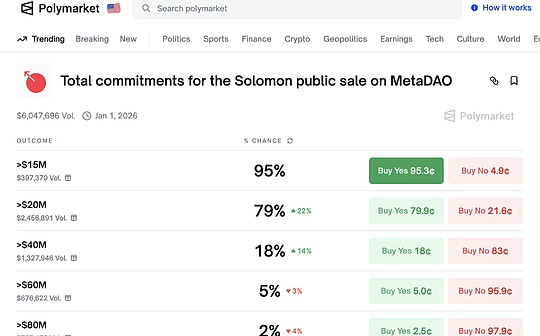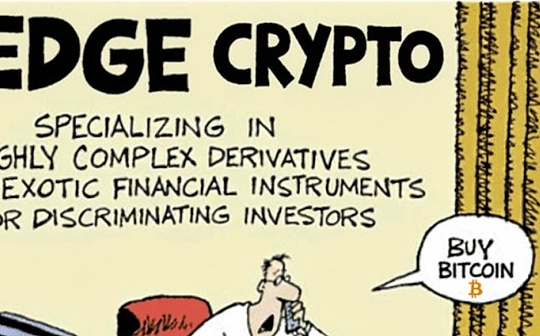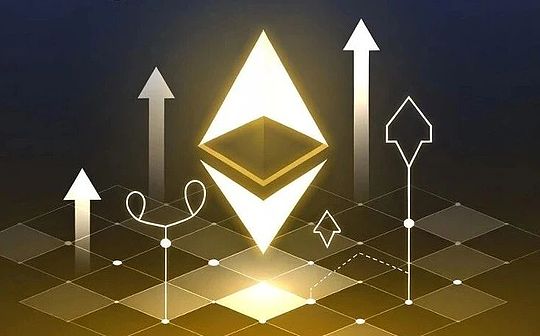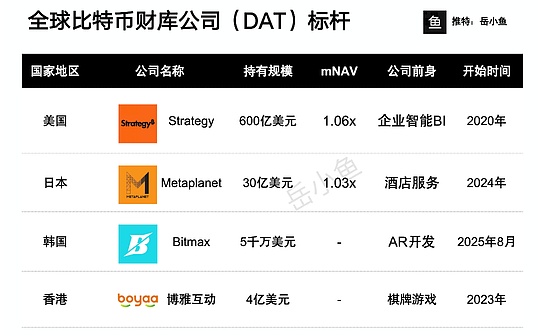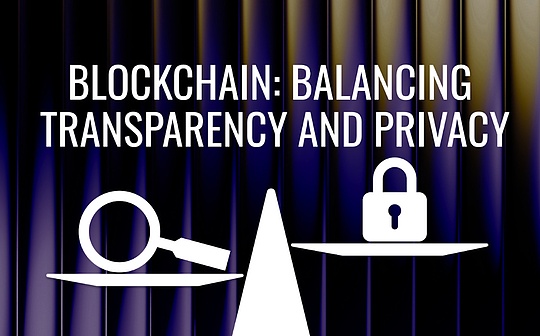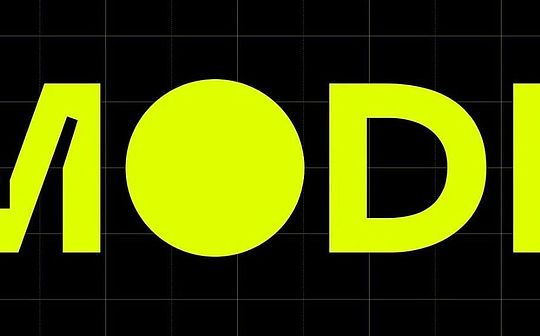
1. Project introduction
Mode Network is a modular Layer2 network concentrated on the Defi track. By BEDROCK upgrades based on Optimism, it supports rapid development and deployment of Ethereum virtual machine (EVM) compatible decentralized application (DAPP), and transaction costs will beReduce 95%.
>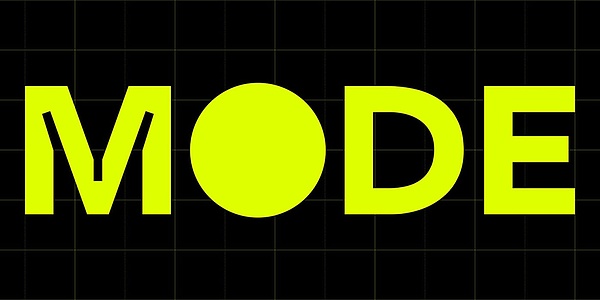
Mode Network is known for its innovative income sharing model. The purpose is to empower developers and users to create a world -class application ecosystem, and directly receive rewards through recommendation and contract guarantee income.By allocating sequencers’ income to reward developers and users, it not only increases the decentralization of DEFI, but also benefits more people from online activities.
2. Core mechanism
2.1Optimistic Rollups
>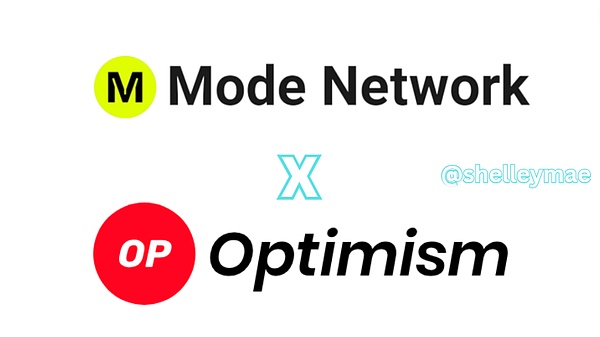
Optimistic Rollups used by Mode Network is a Layer 2 extension solution, which aims to increase the scalability of Ethereum and reduce transaction costs.This technology is realized by running an independent execution layer on the Ethereum main network, which significantly improves the speed of transaction processing without sacrificing security.The following is a more detailed explanation of the optimized volume technology used in Mode Network:
2.1.1Principles and working mechanisms
1. Batch processing:
Optimized volume technology By combining multiple transactions into a batch, and then submitting data from these transactions to the main network of Ethereum.This method reduces the needs of each transaction that must be independently transformed and verified, thereby reducing the cost of transaction.
2. Delay confirmation:
In the optimization volume, once the transaction is included in the batch, it will immediately confirm on Layer 2 without waiting for the confirmation of the Ethereum main network.This provides a fast trading experience.However, the ultimate effectiveness of these transactions still depends on subsequent verification on the main network.
3. Crack proof:
Optimization volume depends on a “optimistic” assumption that all transactions and batches of processing are carried out honestly.If someone thinks that a batch contains fraud, they can submit a fraud certificate to challenge the batch.If the challenge is successful, the fraud batch will be revoked, and related transactions will be rolled back.
4. Roll back and safety:
The optimization volume provides an additional safety layer, because any transaction must eventually be resolved on the Ethereum main network.This means that even if an error or malicious behavior occurs on Layer 2, it can be corrected on the main network to ensure the security of funds.
2.1.2Features and advantages
-
Expansion: By performing transactions on Layer 2 and only sending batch data to the main network, optimizing volumes have greatly reduced the demand for Ethereum main network resources and improved the overall expansion of the network.
-
Cost efficiency: reduced the number of transactions that must be performed directly on the main network of Ethereum, which significantly reduced the user’s transaction costs.
-
User experience: It provides a close -up transaction confirmation and improves the user experience, especially for applications that need to be confirmed by fast transactions such as exchanges or games.
-
Compatibility: Optimized volume technical support for Ethereum virtual machine (EVM), allowing developers to seamlessly migrate existing Ethereum to Mode Network.
2.2Sortor cost sharing
Mode Network’s sorter cost sharing mechanism is an important part of the network core economic model. It aims to motivate developers to create and maintain applications on the platform while increasing user participation.
>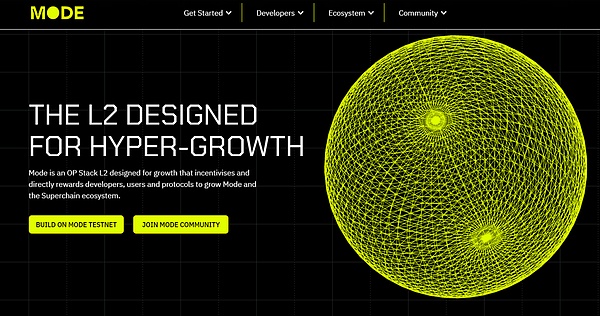
This mechanism is realized through the following key characteristics:
2.2.1The concept of sorter cost
In the Layer 2 solution using optimized volume technology, the Sequencer is a key role that is responsible for collecting and sorting transactions in the network, and then submitted them to the Ethereum main network in batches.This process needs to be paid to the main network of Ethereum, but because the transaction is processed in batches, the average cost of each transaction is significantly reduced.The sorter is therefore income in the network. These income mainly comes from the transaction fee paid by the user.
2.2.2Fee sharing mechanism
1. Income distribution:
-
Developer incentives: Mode Network has created a mechanism that allows developers to obtain a sorter income by registering their smart contracts to a specific fee sharing contract.This approach encourages developers to create and maintain high -frequency transactions, because these applications can generate more transactions, which brings more sorter income.
-
User reward: Some sorters’ income is also used to reward network users, especially those who recommend new users to join the network.This recommendation mechanism encourages existing users to promote the network to help the network increase the user base and activity.
2. Contract registration:
Developers must associate their smart contracts with expense sharing contracts to benefit from it.This usually involves a specific code fragment when programming contracts to ensure that the transaction can be correctly tracked and distributed.
3. Transparency and automation:
The specific proportion and distribution rules for fees sharing are transparent on the Mode Network, and automatically execute through smart contracts to ensure the fairness and transparency of the operation.This automated distribution mechanism reduces potential disputes and enhances the trust of the network.
2.2.3Advantage and influence
-
Incentive innovation: By providing financial incentives for developers, Mode Network encourages more developers to participate and innovate, bringing more and more diverse applications.
-
Increasing activity: The user reward mechanism increases the user’s participation, making users more inclined to use and recommend the Mode Network, thereby enhancing the activity and expansion speed of the network.
-
Ecological system growth: With the emergence of more high -quality applications and the increase of user bases, the entire ecosystem has grown rapidly, which enhances the overall value and attractiveness of the network.
2.3Modular and cooperation mode
Mode Network’s modularity and cooperation model is the core component of its blockchain architecture and operating strategy. This design aims to improve the flexibility, scalability and user participation of the network.Through the implementation of these strategies, Mode Network aims to establish a multifunctional and efficient ecosystem, support diversified application development and promote cooperation among stakeholders.The following is a detailed introduction to Mode Network in modularity and cooperation:
2.3.1Modular structure
1. Definition and purpose:
The modularization of the blockchain refers to the decomposition of the network function into an independent component or module, and each module is responsible for handling specific tasks.This design allows more flexible development and maintenance, and also allows the network to better adapt to changing technology and market demand.
2. Implementation method:
-
Consensus layer: Mode Network may adopt independent modules to process the transaction verification and consensus mechanism to ensure the security and integrity of the network.
-
Execution layer: executing the modular layer of smart contracts and processing transactions, which can optimize the use of resources and improve the processing speed.
-
Data layer: independent processing data storage and access to improve efficiency and scalability.
-
Interactive layer: Responsible for interfaces with users and external systems, such as API and front -end interfaces to ensure good user experience and systematic interoperability.
3. Advantage:
-
Flexibility: Modularization allows a single part of rapid adjustment or upgrading the network without affecting other modules.
-
Maintenance: Each module is independent, facilitates management and optimization, and reduces the potential errors and security risks of the system.
-
Expansion: You can expand the capabilities of certain modules alone as needed without reconstruction of the entire network.
2.3.2Cooperation mode
1. Cooperation ecosystem:
Mode Network encourages and supports those related to various interests (including developers, users, investors, and partners) to jointly promote the development and value -added of the network.
2. Incentive mechanism:
-
Developers and user incentives: Inspired developers’ innovation and user participation by allocating network income (such as sorter costs), providing development fund support, and holding competitions.
-
Partner incentives: Establish a cooperative relationship with the industry partners, jointly develop solutions, and share resources and market opportunities.
3. Governance model:
-
Decentralization governance: Mode Network may adopt a decentralized governance model to enable network users and developers to participate in the decision -making process, such as voting through token voting to determine key network upgrades and policy changes.
-
Transparent communication: Regularly announced project progress and financial conditions, and maintain the transparent and open communication channels inside the ecosystem.
4. Technical cooperation and integration:
-
Standardized interface: Provide standardized programming interfaces (APIS), allowing third -party applications and services to easily integrate into Mode Network.
-
Cross -chain interoperability: Development support to interoperate with other blockchain technologies to expand the application scope and market acceptance of Mode Network.
2.4Mode Network Bridge
Mode Network Bridge is a key component provided by Mode Network in its Layer 2 solution. It allows users to transfer assets efficiently and securely between the Ethereum main network and the Mode Layer 2 network.The main purpose of this bridge is to simplify the cross -chain operation of users while maintaining high levels of security and lower trading costs.
>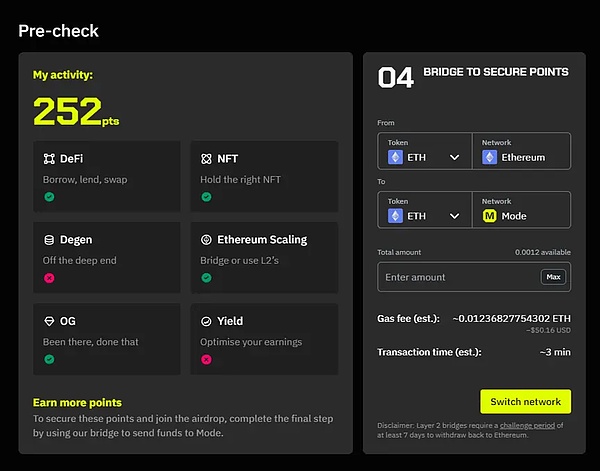
The following is a detailed introduction about Mode Network Bridge:
2.4.1Function and working principles
1. Asset transfer:
Mode Network Bridge users can transfer cryptocurrencies such as Ethereum (ETH) and other Eto to Mode Network.This transfer is realized by locking the assets that are locked on the main network and the corresponding amount of tokens issued on Layer 2, thereby maintaining the balance of assets on both sides.
2. Two stages of operation:
-
Stocking: Users first deposit assets from the Ethereum main network into the smart contract of the bridge.Once the assets are confirmed to deposit, the equal number of tokens will be cast on Mode Layer 2 for users to use.
-
Extraction: When the user wants to bring the asset from Mode Layer 2 to the Ethereum main network, the corresponding LAYER 2cter currency will be burned, and the smart contract on the main network will release the equal amount of assets to the user.
3. Optimize transaction costs:
By concentrating cross -chain transactions, the Mode Network Bridge can significantly reduce the handling fee of users during cross -chain capital transfer.This is achieved by reducing the demand for Ethereum main network resources by handling transactions confirmation and using optimized volume technology on Layer 2.
2.4.2Characteristic
-
Smart contract security: Mode Network Bridge uses full testing and audit smart contracts to handle the locking and release of assets to ensure the security of the transaction and the security of funds.
-
Distributed trust: Although the bridge itself depends on smart contracts, the Mode Network may use additional security measures, such as multiple signatures or distributed trust mechanisms to further strengthen the security of cross -chain transactions.
2.4.3User experience
-
Simplified interface: The Mode Network Bridge design has a user -friendly interface, making cross -chain operations simple and intuitive, and even non -technical users are easy to operate.
-
Quick transfer: Compared with trading directly on the main network of Ethereum, the transfer of the bridge can be completed faster because it uses the efficient processing capacity of Layer 2.
2.4.4Application scenarios
-
DEFI Integration: Users can use Mode Network Bridge to quickly transfer their assets to Mode Network to participate in various DEFI applications, such as borrowing, transactions and liquid mining.
-
Cross -chain interoperability: The bridge not only serves between Ethereum and Mode Network, but also can theoretically expand to other compatible blockchain networks to enhance the interconnection of the entire ecosystem.
3. Ecological system
The ecosystem of Mode Network is built around its Layer 2 solution, which aims to improve the scalability and efficiency of Ethereum, while reducing the cost of users.
>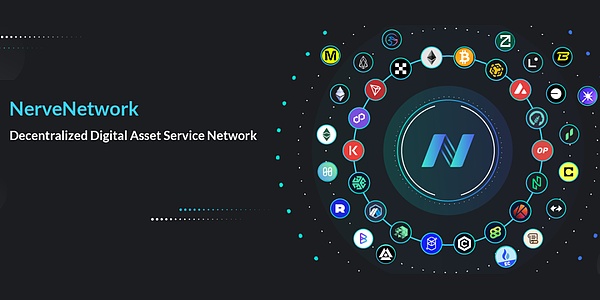
The design of its ecosystem emphasizes innovation, cooperation and user participation, and contains multiple key elements:
3.1Economic model
-
Expense sharing mechanism: Through the sorter cost sharing mechanism, some transaction costs are allocated to developers and users.This mechanism not only encourages developers to create and maintain applications on the platform, but also inspire users to recommend new users to join the network.
-
Incentives: Including airdrops, rewards and recommendations to increase the attractiveness of the network and user activity.
3.2Developers and applications
-
Developers support: Mode Network provides comprehensive developers’ support, including documentation, development tools and software development packages (SDKS), allowing developers to easily build and deploy applications on the Internet.
-
DAPPS Ecology: DAPPS existing or developing in the ecosystem includes decentralized exchanges (DEXS), lending platforms, games and other financial instruments.These applications use the low cost and high efficiency advantages of MODE to provide users with diverse services.
3.3Community and cooperation
-
Community -driven: Mode Network has vigorously promoted the development model of community -driven. Through community voting and feedback mechanisms, users can directly participate in the process of network governance and decision -making.
-
Partnership: Establish a cooperative relationship with other blockchain projects, development teams and enterprises to jointly expand the function and service scope of the ecosystem.
3.4Govern
-
Decentralization governance: Mode Network uses a decentralized governance model to allow currency holders to vote for key network updates, funds and policy changes.
-
Transparency: By issuing updates and financial reports on a regular basis, maintaining the transparency of the ecosystem’s operating system, and enhancing the trust and participation of the community.
3.5Ecological projects that have been launched
The ecosystem of Mode Network is rapidly expanding, especially in the DEFI field.Some key projects on the platform have been launched, each showing its unique functions and market positioning.These projects include:
-
Ether.Fi: A liquid -based pledge protocol based on Ethereum allows users to pledge ETH or other liquid assets to generate LRT tokens to obtain EETH.At the leading position in liquidity re -pledges, TVL reached 2.67 billion US dollars.
-
Renzo: Another liquidity re -pledge protocol, which also supports users to pledge assets to obtain LRT token, and converted into EZETH at a ratio of 1: 1.Ranked third among similar tracks, TVL was $ 990 million.
-
IONIC: A borrowing agreement aims to provide the best borrowing interest rate and design an economic model that is conducive to balanced the interests of both parties.TVL is $ 61 million and received the support of Metacartel Ventures, OHM and Mode.
4. MODE Observatory
>
4.1Usage and function
-
Governance: MODE tokens allow holders to participate in the governance of the network, and vote to determine the key network upgrade and governance proposals.
-
Incentive plan: It is used to encourage users and developers to participate in various activities of Mode Network, such as development competitions and user participation activities.
-
DEFI and community sponsorship: Mode token supports integrated DEFI activities and community sponsorship to help the development of projects and community activities in the network.
-
Ecosystem development: MODE tokens are used to support the expansion and enhancement of the entire MODE ecosystem, including funding new projects and partnerships.
4.2Supply/distribution ratio
>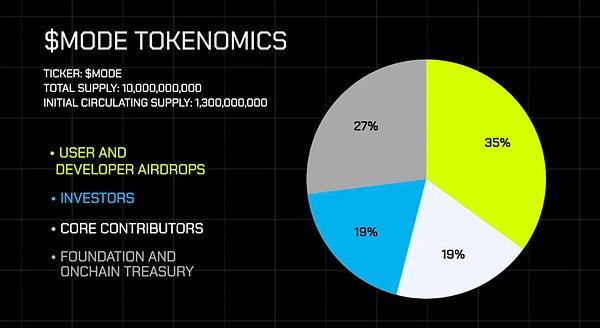
-
Airdrops: 35% of the MODE tokens were assigned to users and developers to encourage the community to participate and contribute.
-
Investors: 19% of the MODE tokens were assigned to early investors, and these funds were used for the initial capital and development support of the project.
-
Core team: 19% of MODE tokens are assigned to the core contributors and team members to inspire their sustainable work and contributions.
-
Chain platform and treasury: 27% of the MODE tokens are retained in the chain platform and the treasury to support the long -term development and operation of the project, as well as possible financing needs in the future.
-
Total supply: 10 billion MODE
-
Initial supply: 1.3 billion MODE
4.3airdrop
4.3.1Overview
-
Total tokens: Mode network airdrops will distribute 5.5 million Mode tokens, of which 4 million are used for integral airdrops
-
Purpose of airdrop: Encourage early participants through airdrops and encourage developers and users to contribute to the ecosystem.
4.3.2How to earn airdrop points
1. Bridge receiving assets:
-
Assets such as ETH, USDT, USDC, or WBTC are received from the Ethereum main network bridge to Mode Network.
>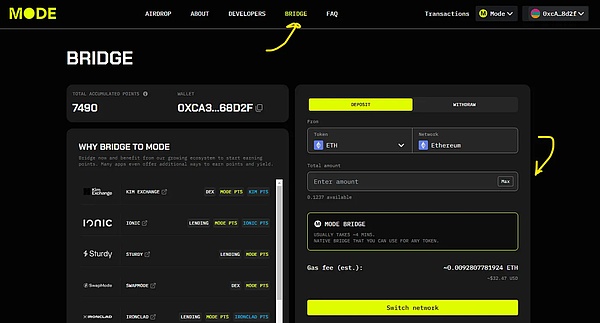
-
The longer the assets of the bridge are maintained on the Mode Network, the more points earn.
-
The seven -day bridge in the early stage of the event can get 12 times the integration.
2. Invite friends:
-
By recommending friends to participate, 16%of the points earned by the recommended users can be rewarded.
3. Use dapps:
-
By interacting with the specified decentralized application (DAPPS), such as Eigenlayer, Renzoprotocol, Layerbank, Ionic, Etherfi, you can earn 2 times points.
>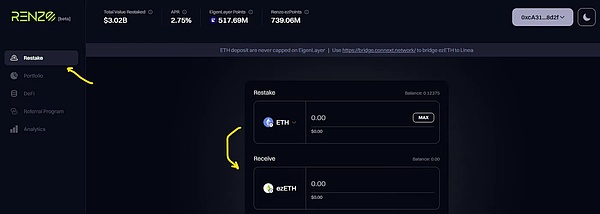
-
These DApps may involve different interaction methods such as exchange, pledge, and loan.
The maximization strategy of airdrop integration
-
Points optimization techniques: By performing asset operations in multiple DAPPS in Mode Network, such as pledge, borrowing and exchange, you can maximize points of points.
-
Exchange strategy: For example, ETH is exchanged on Kim Exchange to EzetH, and then uses Ezeth for pledge and borrowing on Layerbank, and finally stores EZETH on IONIC to get more points.
5. Team/financing situation
The Mode Network team led by two key leaders James Ross and Federico Sarquis, with deep industry experience and extensive network resources.
-
James Ross: Founder, graduated from Economics and Philosophy at the University of Sussex University in the United Kingdom. He has worked as a consultant at Hashflow and invested in Eigenlayer and Ethena.
-
Federico Sarquis: The person in charge of technology has organized activities for Ethereum Argentina and has rich technical and community experience.
-
There are 15 members of the team and adopt a long -range working mode to enhance the flexibility and global collaboration capabilities.This structure helps to respond to market changes and technological progress quickly.
Regarding financing, in October 2020, Mode Network completed $ 9.75 million in financing.In addition, the project also obtained a gift of up to 2 million OP tokens from an optimistic foundation to support user growth incentives.
A round of seed financing was also completed in April 2024. The amount was unknown and led by KR1.
6. Project evaluation
6.1Track analysis
Mode Network belongs to the Layer 2 solution track. It focuses on increasing transaction speed and reducing costs by focusing on the second -layer network based on Ethereum, while maintaining the security and compatibility of the Ethereum main network.
The following are similar projects that are in the same track as Mode Network in the same track:
1. Optimism
-
Introduction: Optimism is a Layer 2 extension solution that uses Optimistic Rollups technology to enhance the scalability of Ethereum and reduce transaction costs.
-
Features: It reduces costs through delayed data availability verification and increases transaction throughput.
2. Arbitrum
-
Introduction: Arbitrum is also a Layer 2 solution with optimized volume technology. It reduces the cost by performing transactions outside the chain and only submitting the results data to the Ethereum main network.
-
Features: Arbitrum emphasizes the efficiency and safety of its optimization volume implementation, especially when dealing with large -scale applications.
3. Polygon
-
Introduction: Polygon (formerly known as MATIC Network) is a Layer 2 solution with a polygon architecture that provides a multi -chain system to solve the scalability problem of Ethereum.
-
Features: Polygon provides a variety of Layer 2 solutions (such as side chains, ZK volumes, and optimization volumes), which supports developers to choose the most suitable expansion solution as needed.
>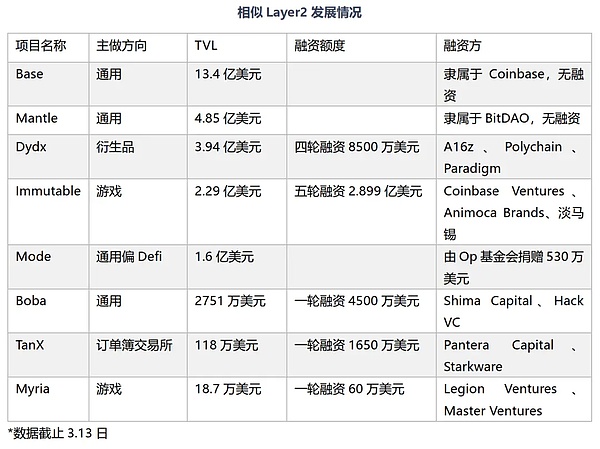
Since its independent online online, TVL has been steadily increasing. As of March 19, 2024, TVL ranked 13th among all Layer2 networks, US $ 162 million, averaging 1.62 daily TPS, and 0.001gwei in the GAS.$ 0.01, a total of 2.12 million transactions have occurred in the past 30 days.
>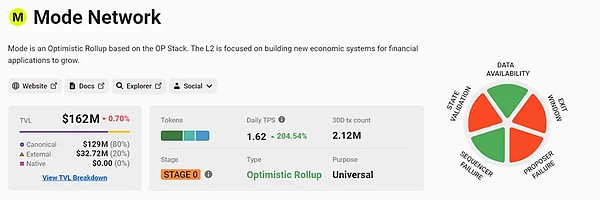
6.2Project advantage
1. Technical advantage
-
Optimized volume technology application: Mode Network uses optimization volume technology to increase transaction speed and reduce costs.This technology has handled transactions on Layer 2, and only submits batch transaction data to the main network of Ethereum, which significantly reduces the burden on the main network while ensuring the security and integrity of the transaction.
-
Modular architecture: Mode’s modular design allows developers to choose and integrated functions as needed. This flexibility makes Mode Network suitable for a variety of applications, from simple payment systems to complex financial products.
2. Ecological system and community incentive
-
Powerful ecosystem incentives: Mode Network actively inspires community participation and ecosystem expansion through its token economic models and airdrop activities.For example, its airdrop plan is designed to promote the growth and activity of the community by distributing tokens to early users and participants.
-
Developers support: Mode Network provides strong developers’ support and funds, encouraging developers to innovate and develop and apply on their platform.This includes providing funds, tools and resources to reduce the difficulty of development and accelerate the time of the product listing.
3. Performance and cost efficiency
-
Decrease in transaction costs: By achieving a significant decrease in transaction costs, Mode Network provides users with a high -cost trading platform, especially for those applications that need high -frequency transactions, such as DEFI and games.
-
Enhanced transaction processing capabilities: Compared with the traditional Ethereum network, Mode Network can handle higher transaction volume, reduce transaction delay, and improve user experience.
6.3Project disadvantages & amp; Challenge
1. Competitive pressure
-
Fierce market competition: Mode Network is not unprecedented in the field of Layer 2 solutions.It needs to compete with other mature solutions such as Polygon, Arbitrum, Optimism, and ZKSYNC. These platforms already have solid user base and wider market recognition.
-
Innovation demand: In order to maintain competitiveness, Mode Network needs to continuously innovate and improve its technology and services, which is especially important in the rapidly changing blockchain field.
2. User and market acceptance
-
Users adopt speed: Although the Mode Network provides significant performance advantages, the user’s migration and adoption speed may be affected by existing habits and platform dependence.Users may need time to evaluate and adapt to the new platform.
-
Market education: need to educate the market to improve the understanding of Mode Network and its advantages, especially when facing non -technical users.
3. Economic and financing risks
-
Fund dependence: The development and expansion of Mode Network depends to a large extent on external financing.The decline in market fluctuations or decline in investor confidence may affect its funding capabilities.
-
Ving currency value fluctuations: As a platform with local tokens, the development of Mode Network may be affected by its token market performance.The fluctuation of tokens may affect the stability and attractiveness of the project.
7. Conclusion
In general, Mode Network, as an innovative Layer 2 solution, aims to greatly improve the transaction efficiency and scalability of Ethereum through its optimization volume technology.By introducing modular architecture and inspiring token economics, Mode Network is not only committed to reducing user transaction costs, but also actively encourages community participation and ecosystem development through airdrops and other incentive measures.
With the continuous progress of blockchain technology and the increasingly mature encryption market, the vision of Mode Network is to become a key force to promote the growth of Ethereum ecosystems, providing users and developers with a faster, more economical, and more scalable platformEssenceWith its technical advantages and market strategies, Mode Network is expected to play an important role in future blockchain development to promote the development of the entire industry.

